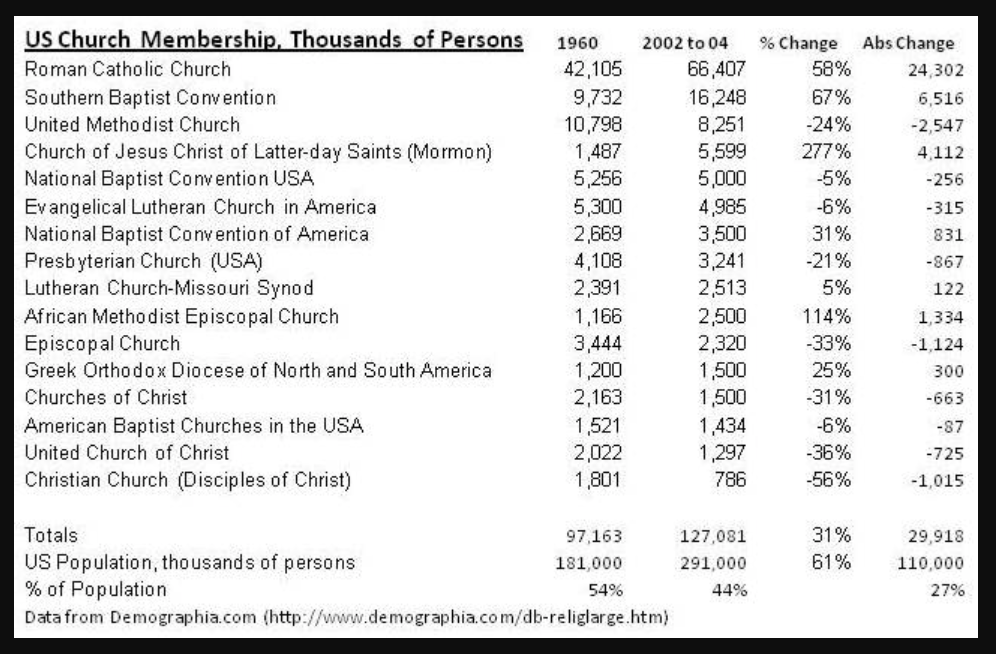Now that regular church attendance is no longer default behavior for responsible citizens as it was when I was growing up in a small East Tennessee town, much is being written about how and why the remaining regular attendees choose the particular churches they attend. Denomination choices may well be based either on sticking with, or avoiding, the denomination of one’s parents, but congregation choices seem too often to be based on liking the pastor, the sermons, the music, the food, the fun, or the fellowship. Sometimes proximity and convenience may play a role. Opportunities for service and ministry could play a role for serious believers, because, for them, personal involvement is essential. And perhaps some are just looking for confirmation of whatever theological or social positions they have adopted as their own over time though it does seem that few are interested in theology while many are interested in social issues.
But, not all denominations and churches are losing ground. While there is concern about loss of members and drooping attendance at so-called mainline denominations in the US, Roman Catholics and Southern Baptists have kept up pretty well with growth in the population.

- Any successful search for eternal things will lead eventually to “one Lord, Jesus Christ, the only Son of God, eternally begotten of the Father.”
- His Great Commission and two Great Commandments apply equally to all of us.
So, we might as well work together and help each other out. After all, it’s not all about us. And, if we did that, we might see a reversal of that decline in total participation.
Catholics are only holding their own because of massive immigration; the second largest group in the US, after Catholics, is ex-Catholics.
The Southern Baptist Convention is experiencing decline and loss of converts.
The largest group among those under 35 years old? "None of the Above". Barely 4% of those under 35 in the US population belong to ANY Mainline Protestant Church. Without cultural assimilation (higher education and incomes) and divorce (some ex-Catholics) and disaffected gays who want to dress up on Sundays, the numbers joining Mainline Protestant churches would be even lower than they are.
And Sunday attendance numbers have been bottoming out since 2002. When your median age is 59+ (and rising) you're going to get even smaller soon.